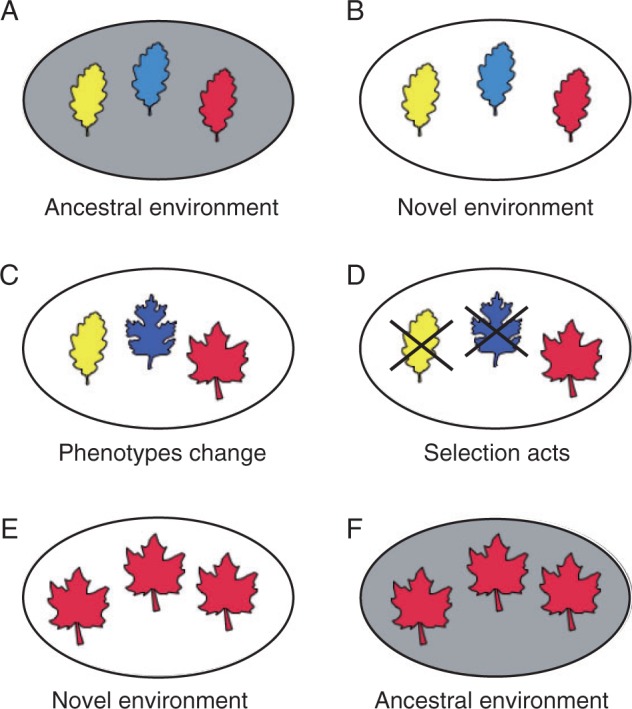Fig. 2.

Phenotypic plasticity, followed by genetic assimilation, may facilitate the evolution of a new, canalized trait regardless of the environment through the following steps (here, the trait is a new leaf shape; different colours represent different genotypes). (A) A genetically variable population (B) experiences a novel environment (indicated here as a change from a shaded to an unshaded background). (C) Consequently, the environment induces novel phenotypes (different leaf shapes), but different genotypes respond differently (by producing different-shaped leaves). (D) Selection disfavours those genotypes that produce maladaptive phenotypes (leaf shapes) in the novel environment (indicated here by an X). (E) Such selection may result in the evolution of a novel, canalized trait (a novel leaf shape) that is expressed regardless of the environment. (F) That is, the novel trait is produced even when the environment changes back to the original, ancestral state.
